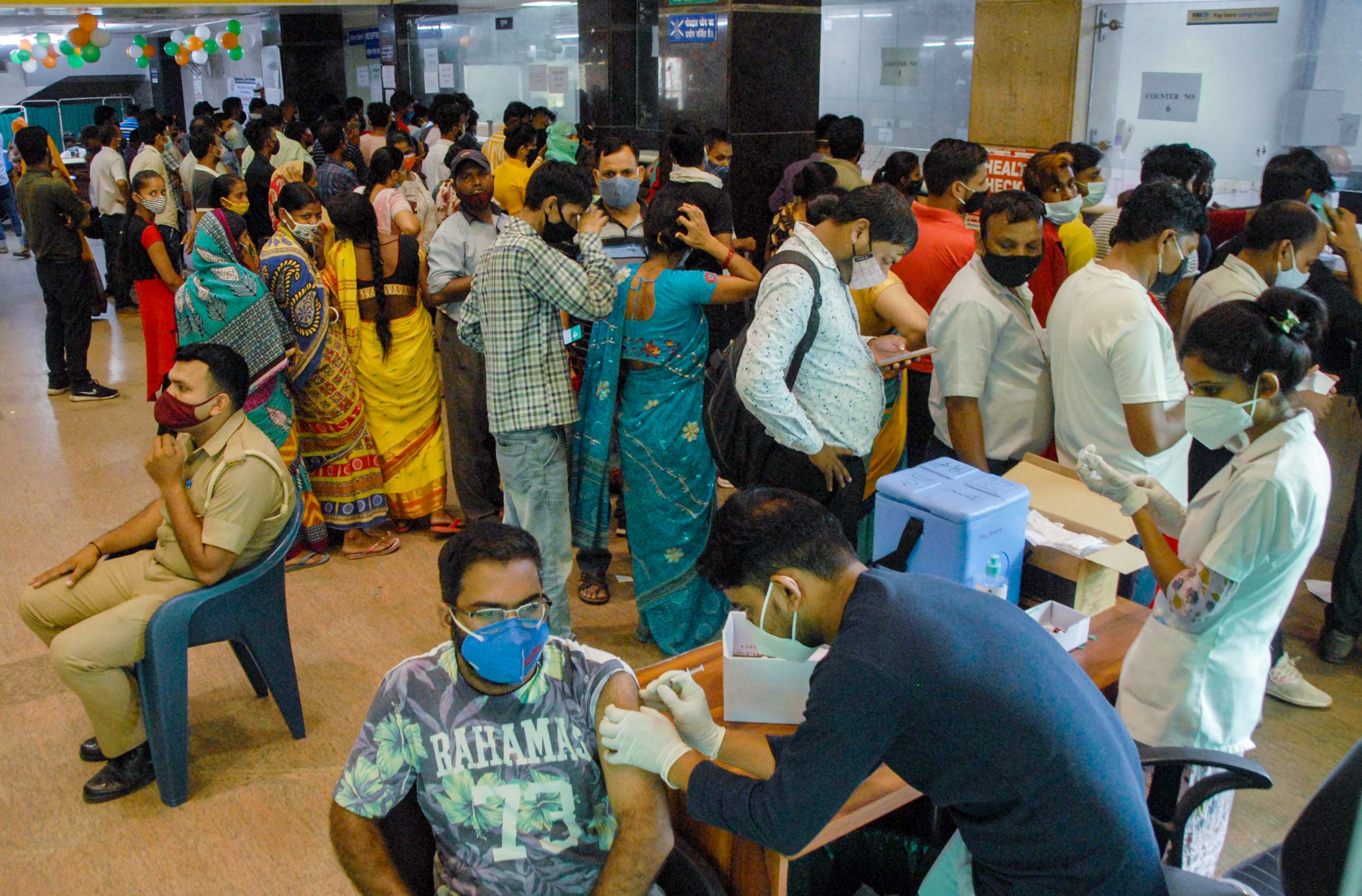Government officials were overjoyed earlier this week when India set a new single-day record by administering over 8 million COVID-19 vaccines. According to Bloomberg, experts believe that even at this breakneck speed, a country just recovering from a disastrous second wave may not be able to prevent a third. They also doubt that the current effort, which is averaging around 4.6 million doses each day, up from approximately 3 million for the last month, can be sustained.
At this rate, some experts quoted by Bloomberg believe a third wave may come within months, raising concerns of a recurrence of the previous nightmare of oxygen shortages and overburdened hospitals in the country.
Also Read | Explained: The difference between the Delta and Delta Plus variants of COVID-19
Fresh Jolt
India has significant obstacles in speeding up its vaccination campaign. Two local producers are presently producing less than 100 million doses each month, which is insufficient for country’s approximately 1.4 billion citizens, Bloomberg reported. There is also tremendous reluctance to overcome and practical obstacles in servicing most of India’s rural areas, where more than two-thirds of the population lives.
Nonetheless, Prime Minister Narendra Modi must hope that the new high will provide the vaccination programme with the boost it requires, Bloomberg stated. NK Arora, chair of India’s National Technical Advisory Group on Immunisation, announced this week that up to 220 million vaccines will be accessible starting next month. He said that India intends to vaccinate 10 million people every day, citing the country’s history of massive child immunisation efforts for diseases like polio.
World’s Pharmacy
The joy among government officials is reminiscent of India’s coronavirus vaccination programme, which began in January. PM Modi branded India “the world’s pharmacy” after sending out millions of injections in a short-lived round of vaccine diplomacy.
Also Read | Mass graves uncovered after Ganga water recedes in UP’s Prayagraj: Report
PM Modi’s generosity substantiated a halting rollout at home, with lower-than-anticipated quantities coming off the production lines at the world’s largest vaccine maker, Serum Institute of India and India’s other key provider, Bharat Biotech. Both businesses have stated that they would increase output beginning in July. However, Serum’s CEO, Adar Poonawalla, warned last month that exports aren’t likely to start until the end of the year, which is a setback for many impoverished countries that rely on Indian supply.
‘Wishful Thinking’
According to Anubhuti Sahay and Saurav Anand, South Asia economists at Standard Chartered Plc, if a daily dosage rate of approximately 3.2 million is maintained, India would be able to vaccinate 45% of its adult population by this year’s end and 60% by the end of March 2022, Bloomberg reported. According to them, if additional vaccines become accessible and the rate of vaccination improves by 30%, India would be able to fully immunise 55% of its population by the end of 2021.
In an interview on Wednesday, Aparna Mukherjee, a senior scientist at the Indian Council of Medical Research, stated “We’re a big country, we’ve got a lot of people to vaccinate.” Getting everyone vaccinated before the third wave hits would be “wishful thinking,” she added, but efforts are on to inoculate the most vulnerable.
Also Read | India records 51,667 new COVID cases, recoveries outnumber new infections
Even with the boost, penetration has been inconsistent across the country. According to Standard Chartered, vaccination rates in India’s top five states, which account for over half of the country’s GDP, are lower than the national average, Bloomberg reported. The speed is considerably slower in India’s vast countryside.







